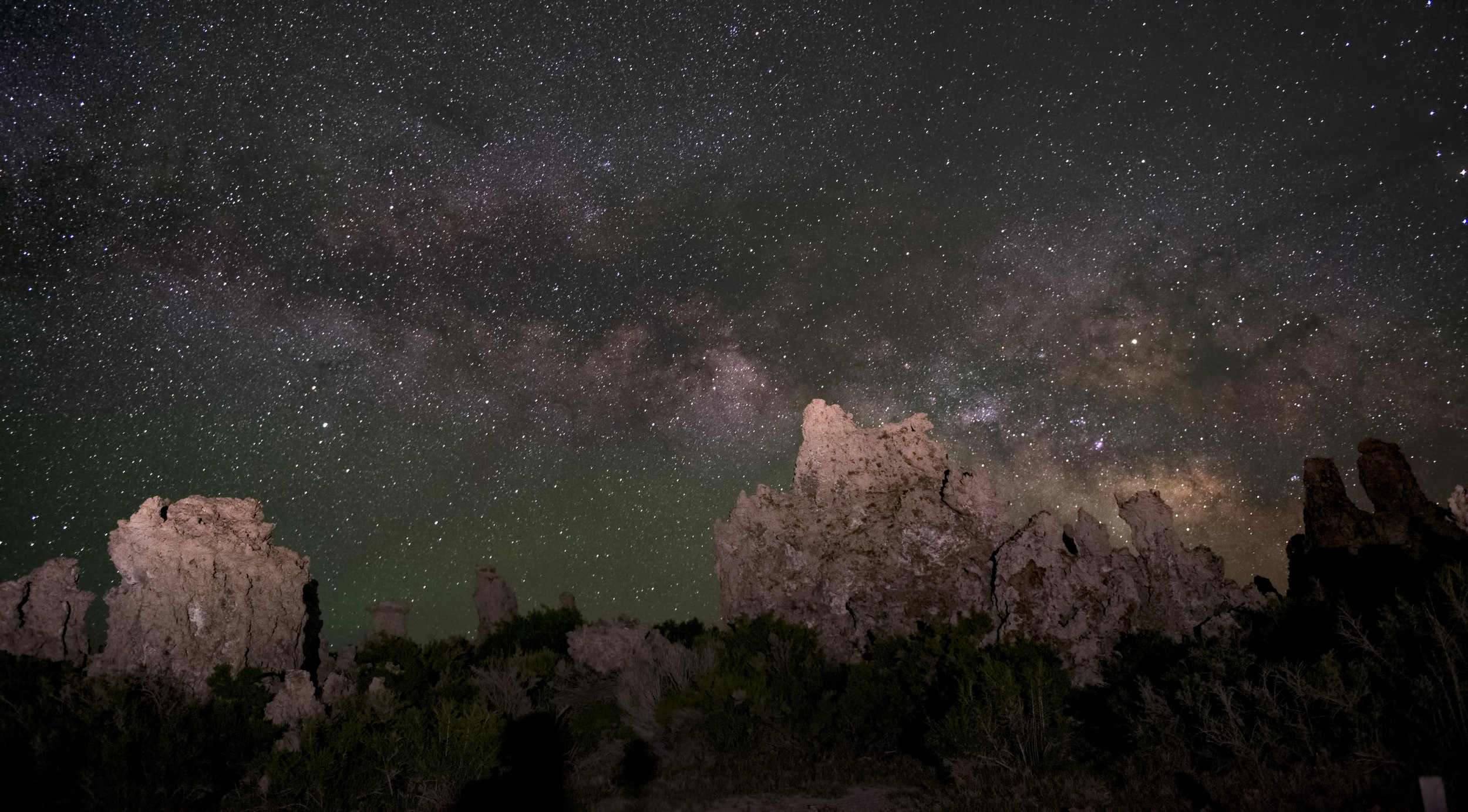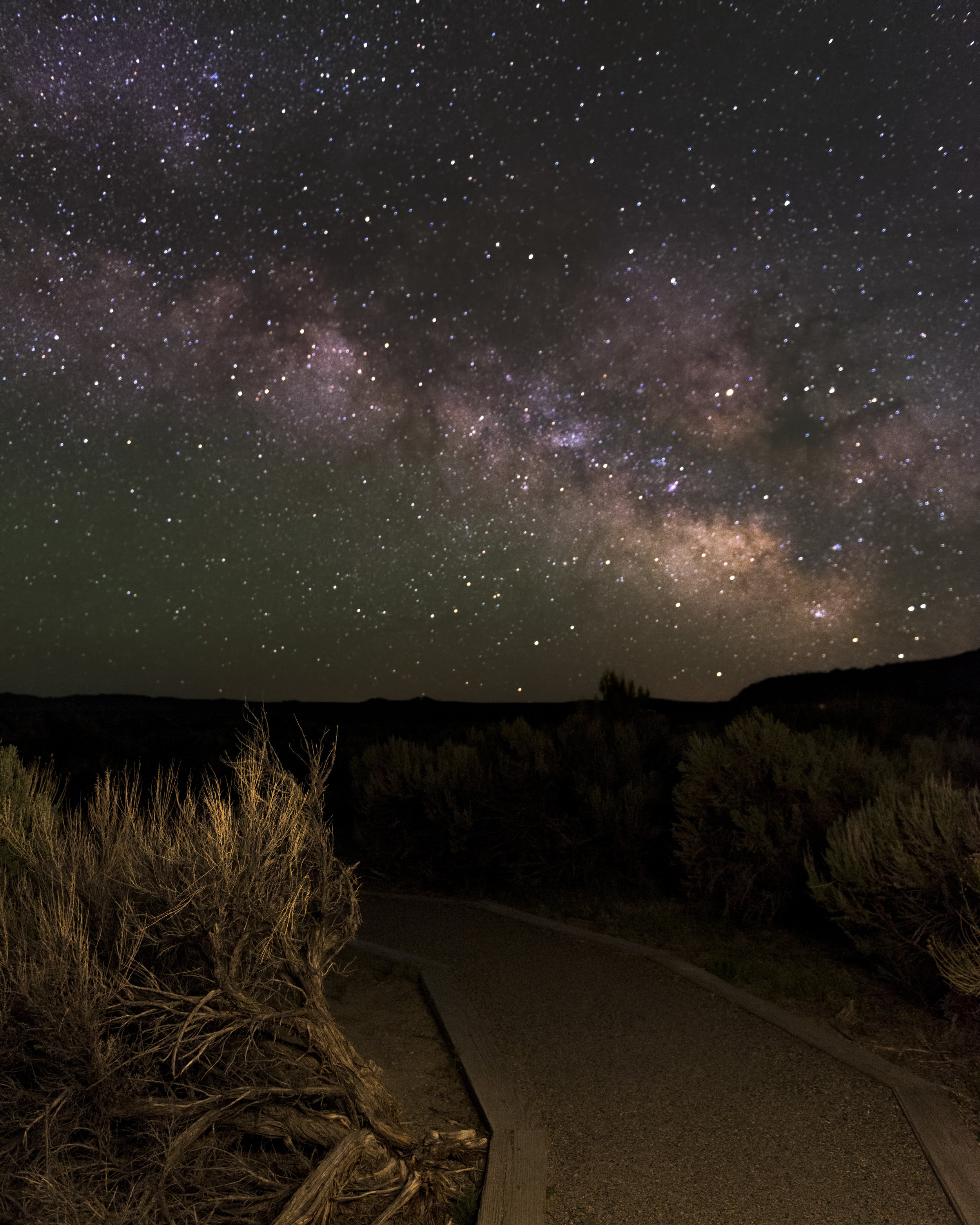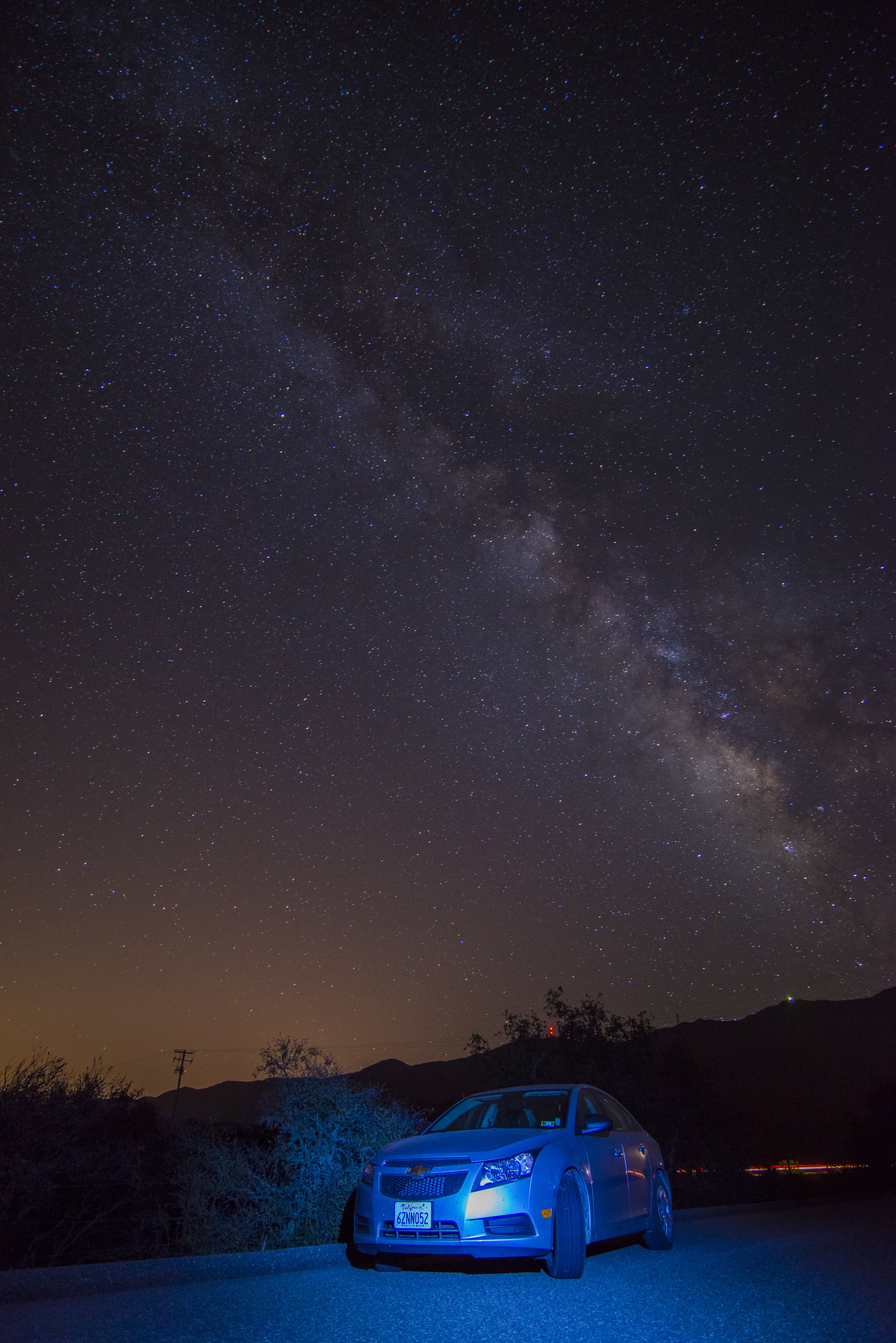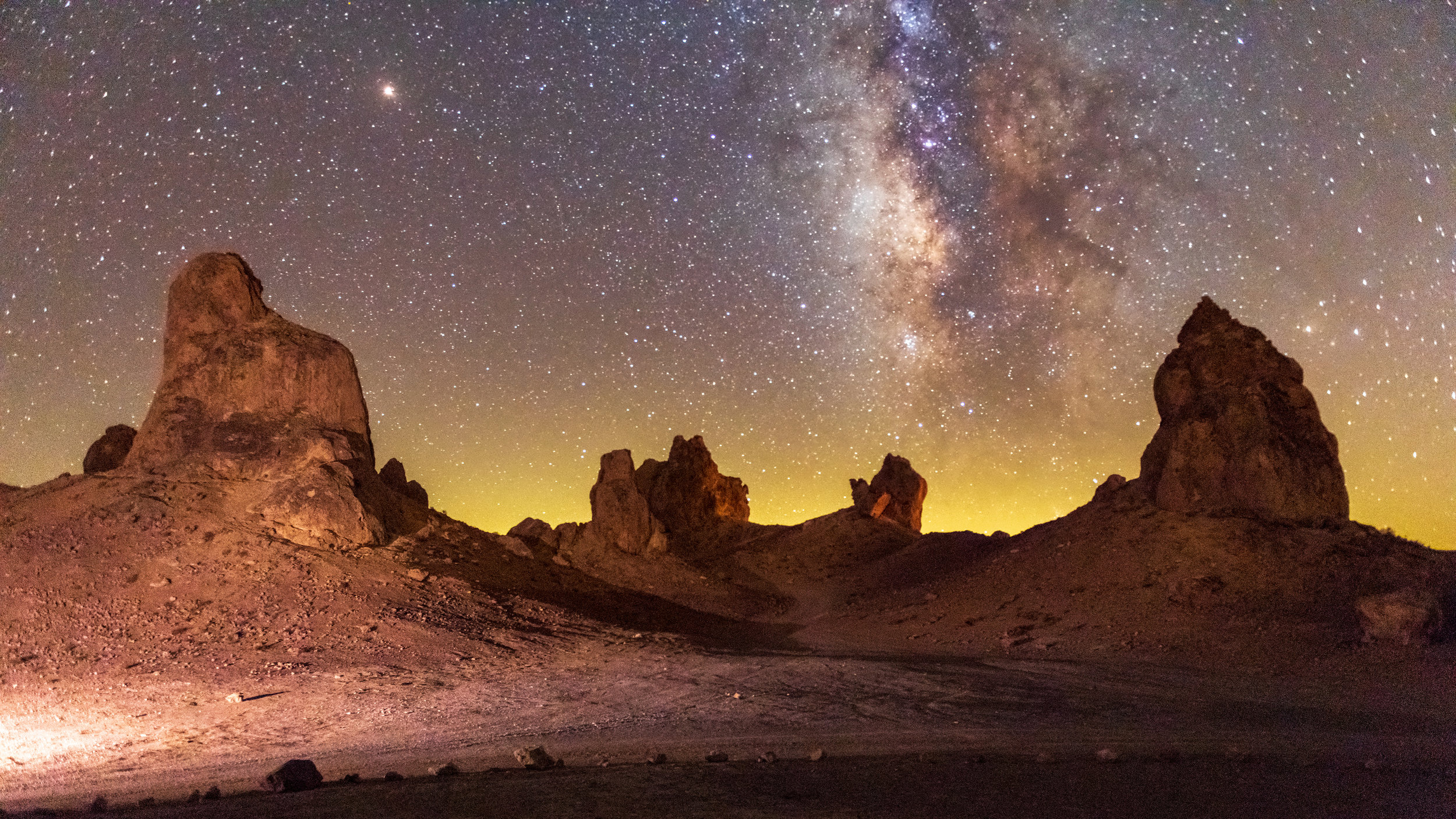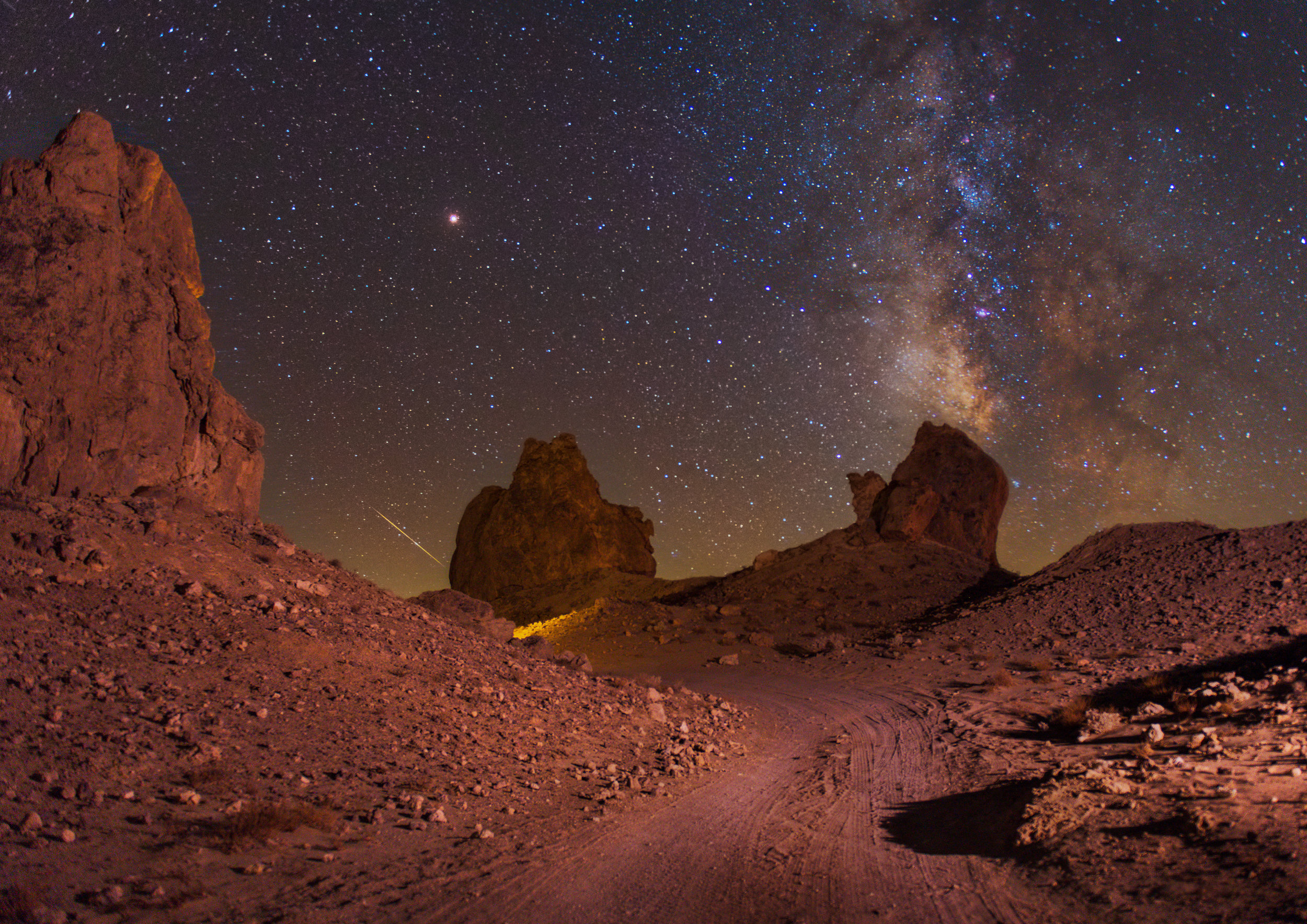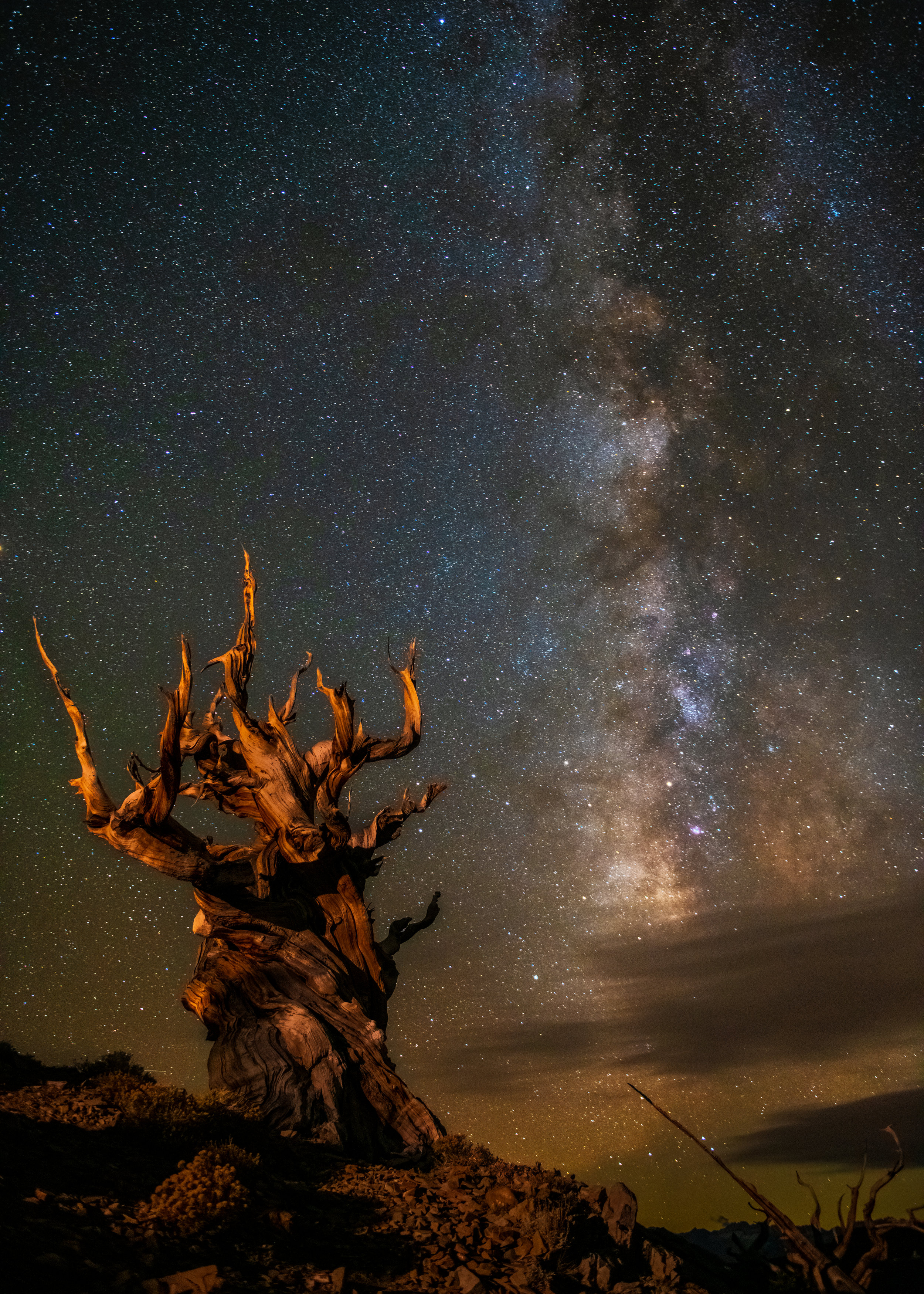Watching the core of the milky way galaxy rise over the horizon on a night sky is truly an amazing experience. I watched it the first time as a kid with my grandfather and 30 years later its still a mighty impressive sight. So naturally, when I got into photography, I tried to perfect a technique for Astro-landscapes photographs. The concept was simple enough, find a good landscape view, and wait for a moonless night, set the camera to capture faint light and voila!
The first time we tried it was at Zabriskie Point, and the results were so bad, I didn’t even bother processing the image. I tried a couple of times at various locations but soon found some faults in my approach. I was planning my night time shots as an afterthought, often at locations after a sunset, which meant that I often had an irritated wife who couldn’t wait to get back to the civilization for some food and warmth. The second problem was my lack of preparation, and I often had no composition or focusing techniques in mind making it hard to get a decent shot in the completely dark environment. But the main challenge was to light the foreground of the composition. There almost no ambient light available and all the lighting that I have tried resulted in very artificial-looking landscape scenes. After repeated failures, I decided to adjust my approach and started researching some techniques in the hope that I could practice them at home before venturing out again.
So, it was a revelation when I came across low-level lighting in Royce Bair’s incredible book called Milky Way Nightscapes. Low-level lighting involves lighting a small to medium landscape foreground interests with a very low power lighting source. It took me a while to get a couple of lighting sources that could get their strength to a very low number. But Once I had the light source, we waited for the new moon night to venture out to the stunning Trona Pinnacles formations in the middle of the California desert a few hours north of Los Angeles. These unusual geological features are part of the California Desert National Conservation Area. The unusual landscape consists of more than 500 tufa spires (porous rock formed as a deposit when springs interact with other bodies of water), some as high as 140 feet (43 m), rising from the bed of the Searles Lake (dry) basin. The pinnacles vary in size and shape from short and squat to tall and thin and are composed primarily of calcium carbonate (tufa). They now sit isolated and slowly crumbling away near the south end of the valley, surrounded by many square miles of flat, dried mud and with stark mountain ranges at either side (Source: Wikipedia). One of the outstanding features about the pinnacles is that the sky here gets close to total darkness at night, meaning you get a stunning view of the milky way and the galactic core from this spot.
We got to our spot well before sunset, and I managed to find a nice area where the composition looked good, and I confirmed the path of Milky way’s galactic core with the photo pills app on my phone. We waited over an hour for the light o completely die down and the stars to reveal themselves. This time I was much prouder of my shots, but the lighting still looked a bit off. And the frustrating part about night photography is that there is no realistic way to compare your results until you are in front of a computer. So, in many ways, it's a lot like shooting with film.
I patiently waited for the next new moon and headed out to my favorite photo hunting ground, the Eastern Sierras. Now, this is a shot that I had in mind for four years. I noted this Bristlecone pine on our first trip to the grove on the slopes of the white mountains near Bishop, CA. This tree is the most picturesque on the trail. What makes it interesting is its precarious perch on a crumbling rock slope and the dramatic gnarly branches that stretch out to the sky. This time I was a bit better prepared, I had a strategy to reduce the strength of my light sources, and it was the inverse square law of lighting. Just move the light source further away from the scene.
But this time there was another problem, I was not the only photographer who thought about this shot, there were other there as well. And in my experience, lighting a scene while other photographers are trying to take a milky way shot is not a good idea. So, I tried a different approach, after waiting for about an hour while everyone took their shot, I tried a novel approach. I asked them politely. And it worked, I explained about low-level lighting, and everyone got excited to try the new technique. I placed the lights quite far away, and even after the first shot, I knew that I nailed the shot. Even on the tiny back screen, the light looked perfect. It took a while, but finally, I had my perfect milky way shot.


